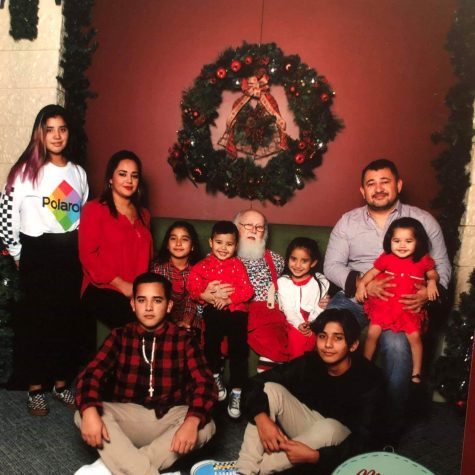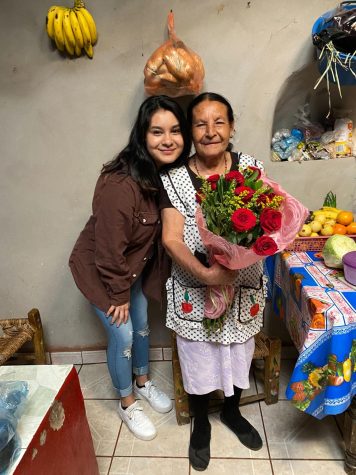‘If we didn’t have luck, we would be a tag’
Students relate to the Hostile Terrain 94 Exhibition, which portrays death on the US-Mexico border.
The Hostile Terrain 94 Exhibition is now showing at the Jordan Schnitzer Museum of Art.
February 8, 2023
“If we didn’t have luck, we would be a tag,” Carlos Rojo, a senior political science major, said at the Hostile Terrain 94 Exhibition.
Rojo said luck was a factor in receiving his visa and crossing the border.

Carlos Rojo, bottom left, with his family.
“It is tragic seeing names that are similar to my family, and it makes me think that it could have been our names on a tag,” Rojo said.
Hostile Terrain 94 will be showing at WSU’s Jordan Schnitzer Museum of Art until March 11. The 94 refers to 1994: the year the US Border Patrol implemented the immigration strategy Prevention Through Deterrence, which deters undocumented migrants from entering the US through urban areas.
At the exhibition, students, faculty, staff and community members learn about current and historic issues surrounding the US-Mexico border and fill out toe tags for migrants who died while attempting to cross it. These tags record the name, age, sex and cause of death of the migrants, as well as the condition of their bodies and the location where they were found. Participants then pin the tags to the bodies’ locations on a map of the US-Mexico border.
“Seeing tags of many who were so close and could not fulfill their wish of the American Dream, it hit home because of the many stories my father has shared with us as he did this journey a couple of times,” Stepheny Lopez, a senior comparative ethnic studies major, said. “Knowing he made it out alive makes me realize how much my parents sacrificed for better opportunities for themselves and the future of their family.”
The exhibition focuses on migrants who died crossing the Sonoran Desert between the 1990s and 2022. At least 3,200 people have died, mainly of dehydration and hyperthermia, during the crossing, according to the Undocumented Migration Project.

Stepheny Lopez, left, with her grandmother.
People can also attend four workshops hosted by four WSU professors that specialize in ethnic and cultural studies, all to be hosted at the museum:
- Noon–1:30 p.m. on Feb. 9
- 1–2:30 p.m. on Feb. 10
- 3:30–5 p.m. on Feb. 14
- Noon–1:30 p.m. on Feb. 21
Eliseo Ortiz, a digital technology and culture professor, said he is conducting workshops in hopes that participants look at the database of migrant fatalities more deeply and interrogate the reasons behind them.
“Participants are asked to retrieve and transcribe a growing record of identified and unidentified fatalities to raise awareness of the impact that Prevention Through Deterrence continues to have on the lives of border crossers,” Ortiz said.
Ortiz said he hopes that participants gain a better understanding of issues surrounding the US-Mexico border with the help of data visualization and active engagement.
Museum executive director Ryan Hardesty said the exhibition was brought to WSU because the museum’s 2022–2023 exhibition season was organized around shared themes of migration and a sense of home and belonging.
“With a special focus on Latinx experiences through our exhibitions ‘Our Stories, Our Lives: Irwin Nash Photographs of Yakima Valley Migrant Labor’ and ‘Juventino Aranda: Esperé Mucho Tiempo Pa Ver,’ I knew that adding HT94 would deepen the conversation for the WSU Pullman community,” Hardesty said.










